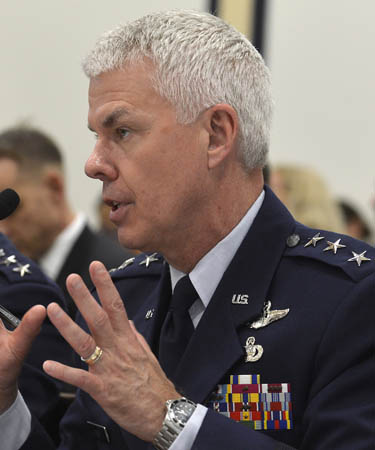 The Long Range Strike Bomber is “absolutely critical” to the Air Force’s future ability to project power, said Lt. Gen. Charles Davis, military deputy in the Air Force’s acquisition office, on Wednesday. Despite significant investment in today’s fleet of B-1s, B-2s, and B-52s, “all we have been able to do is react to what the threat is,” Davis told the House Armed Services Committee’s seapower and projection forces panel in testimony on April 24. “It is money that doesn’t provide a new capability,” he explained. “We are just surviving diminishing parts, we are surviving new threat radar modes, we are surviving missile technology,” with the bomber upgrades, said Davis. “I do not know how we do that for another three decades,” he added. Enter LRS-B. Scheduled for initial operations in the mid-2020s, and leveraging more than 20 years of technology development on other sophisticated airframes, the new bomber will enable the Air Force to operate in “areas of the world where we can’t necessarily survive for lengthy periods of time today,” he said. “It will make us be the one who is driving the threat reaction.” (See also Protect the Bombers.)
The Long Range Strike Bomber is “absolutely critical” to the Air Force’s future ability to project power, said Lt. Gen. Charles Davis, military deputy in the Air Force’s acquisition office, on Wednesday. Despite significant investment in today’s fleet of B-1s, B-2s, and B-52s, “all we have been able to do is react to what the threat is,” Davis told the House Armed Services Committee’s seapower and projection forces panel in testimony on April 24. “It is money that doesn’t provide a new capability,” he explained. “We are just surviving diminishing parts, we are surviving new threat radar modes, we are surviving missile technology,” with the bomber upgrades, said Davis. “I do not know how we do that for another three decades,” he added. Enter LRS-B. Scheduled for initial operations in the mid-2020s, and leveraging more than 20 years of technology development on other sophisticated airframes, the new bomber will enable the Air Force to operate in “areas of the world where we can’t necessarily survive for lengthy periods of time today,” he said. “It will make us be the one who is driving the threat reaction.” (See also Protect the Bombers.)
The U.S. sent Air Force F-16s over central Syria in a show of force following the Dec. 13 killing of two U.S. Army Soldiers and one American civilian interpreter by a gunman linked to the Islamic State group.

